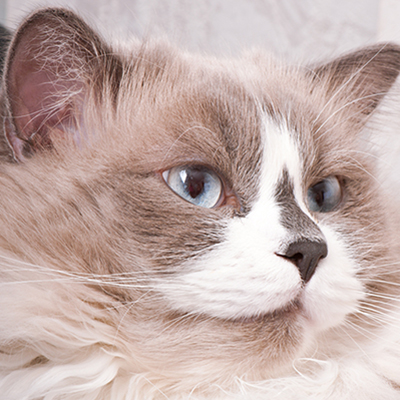The Ragdoll is a really cool cat. His huge body, semi-longhaired coat and affectionate disposition make me think of a Maine Coon, but his coloration obviously has a strong influence from Oriental breeds. Here’s the scoop on very popular breed.
Origins
The Ragdoll was developed in the early 1960s by Riverside, California, breeder Ann Baker, from ordinary domestic cats. The matriarch of the line was a longhaired cat named Josephine, who was mated with a seal mitted cat named Daddy Warbucks. Some sources say Daddy Warbucks was Josephine’s son, others don’t. However, Daddy Warbucks was bred back to Josephine’s daughter Buckwheat, and Buckwheat’s half-sister Fugianna, and these cats were the foundation of the breed.
Today, the Ragdoll is recognized for championship status in both the Cat Fanciers Association and the International Cat Association.
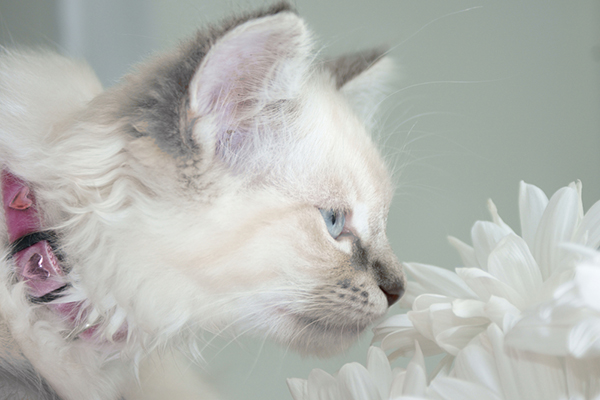
Appearance
The Ragdoll comes in three patterns: colorpoint, bicolor and mitted. Colorpoint Ragdolls have markings like Siamese cats, mitted Ragdolls have white feet and bicolor Ragdolls have white bellies and a white chin as well as white boots and mittens. You can find Ragdolls in seal, chocolate, blue, lilac, red and cream, as well as tortie and tabby variations of these point colors.
Ragdolls have innocent-looking blue eyes, wide-set ears and wedge-shaped heads. They are among the largest domestic cats: adult males weigh 15 to 20 pounds and females weigh 10 to 15 pounds.
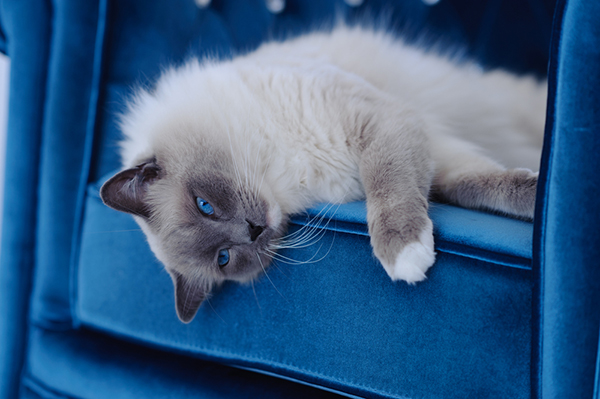
Health and longevity
Ragdoll kittens have rapid growth spurts but are slow to mature: They don’t reach their full size until they’re about four years old. After that age, be sure to monitor their food intake and avoid excessive weight gain.
Generally speaking, Ragdolls are healthy cats, but the breed does have a high level of inbreeding. According to the Ragdoll Database, about 45 percent of the breed’s genes come from one cat, Raggedy Ann Daddy Warbucks, which has resulted in a higher than average risk for certain health problems. Hypertrophic cardiomyopathy and blood clot blockages, kidney and bladder issues are more common in Ragdolls than in other breeds.
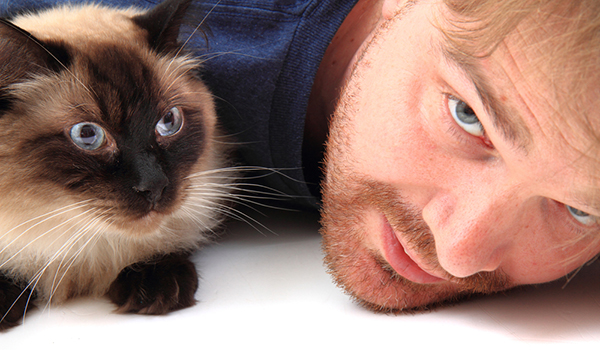
What it’s like to live with a Ragdoll
Your Ragdoll probably won’t be a curtain climber, even as a kitten. He’ll be as rambunctious as any kitten and he’ll enjoy chasing toys and maybe even playing fetch, but he won’t use your bookshelves as a jungle gym. He’ll make fast friends with your whole family and your other pets, including dogs, and will tolerate unintentional rough handling by small children better than many other breeds. (Still, please make sure that children know it’s not okay to roughhouse with the kitty.) As your Ragdoll reaches social maturity around the age of three, he’ll calm down and settle into that famous attentive, loving lap-cat mode.
Your Ragdoll will require regular grooming, although not as much as other longhaired breeds. You’ll need to comb him once or twice a week to remove any dead hairs and separate tangles. During shedding season, he’ll need a bit more attention: check his armpits to be sure he’s not developing uncomfortable mats there. As long as you get him used to regular combing when he’s a kitten, you shouldn’t have any trouble as he gets older.
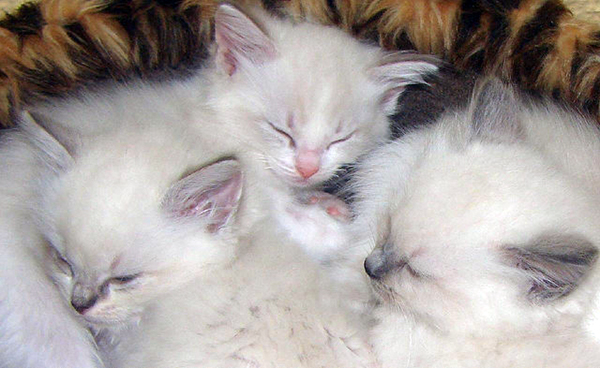
Ragdoll trivia bits
- Breed founder Ann Baker was a good marketer and a heck of a storyteller. She came up with a doozy of a tale about how the Ragdoll came to be: Allegedly Josephine was hit by a car and taken to a local medical center where her genes were altered, and after that, all her litters had the loving nature and tendency to go limp in people’s arms.
- The Ragamuffin started out as essentially the same breed as the Ragdoll. In 1994, a group of breeders became disenchanted with increasingly strict breeding restrictions posed by the Baker’s International Ragdoll Cat Association and split off to form their own group. Because Baker had trademarked the name Ragdoll, they had to come up with a different name for the same cat.
- Like Siamese cats, Ragdolls are born white and slowly develop their point colors.
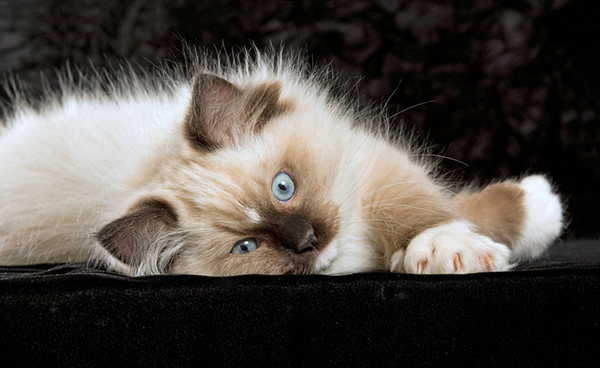
Do you have a Ragdoll in your home? What’s it like to live with her? Please share your thoughts and photos of your Ragdoll in the comments!
Read more about cat breeds on Catster:
- Get to Know the Chartreux: A Smart Cat With a Fixed Smile
- Get to Know the Bombay: A Mini Panther With a Charming Nature
- Get to Know the Persian: The Original Feline Nobility
- 5 Purebred Cat Breeds I’d Have a Hard Time Saying No To
- Get to Know the Egyptian Mau: A Sensitive Cat With a Wild Look
- Get to Know the Siberian: The Folk Cat of the Great Frozen North
- Get to Know the Manx: A Mighty Hunter and Sweet Companion
- Get to Know the American Shorthair: One of America’s Original Cats

